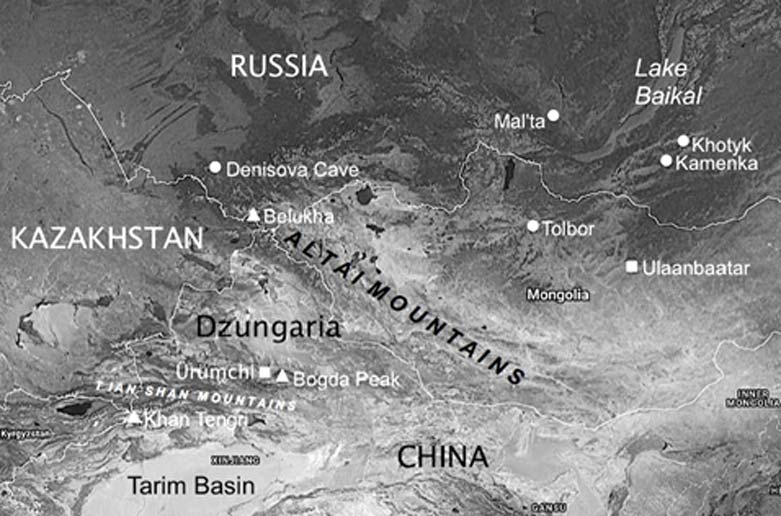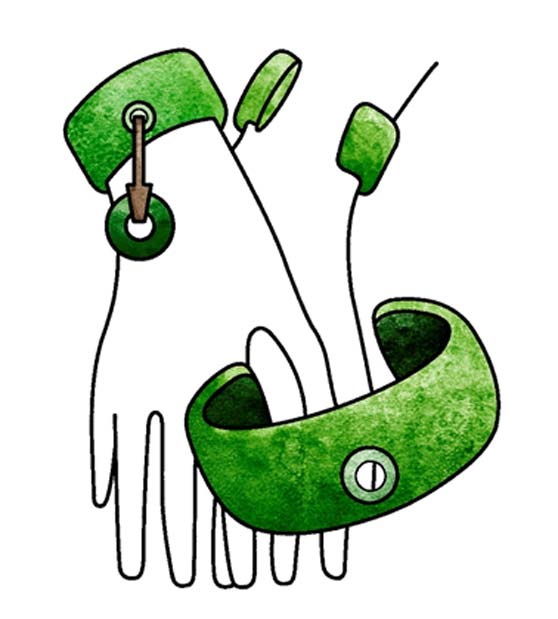
The Lost Legacy of the Super Intelligent Denisovans Who Calculated Cygnocentric-based Cosmological Alignments 45,000 Years Ago
A chance discovery by archaeologists in 2008 of a finger phalanx of an archaic human found in the Denisova Cave in the Altai Mountains of southern Siberia has helped change everything we know about the origins of civilization. The sequencing of the bone’s genome in 2010 showed that it belonged to an extinct type of hominin. This previously unknown human population are today known as the Denisovans (pronounced Denis-ô-vans or, more commonly, Denis-o-vans) in honor of the cave in which the finger bone was found.

Map of the Altai, Tarim Basin and Baikal regions of Central and Eastern Asia showing Upper Paleolithic sites and other locations mentioned in The Cygnus Key, including the Denisova Cave. (Image credit: Andrew Collins)
Robust Individuals
Since that time the Denisova Cave (named after a hermit called Denis who lived there in the 18th century) has produced further evidence of Denisovan occupation between 100,000 and 40,000 years ago. It comes from the discovery of three molars, two from adults and one from an adolescent. All are extremely robust, suggesting that at least some Denisovans were of exceptional size and height.
Denisovan Ancestry
In addition to this, up to 5 to 6 percent Denisovan DNA has been traced in modern human populations from Central Asia in the west across to East Asia, South Asia, Melanesia and Australia in the east. It is present also among the Yi or Lolo peoples of China, Vietnam and Thailand, and the indigenous Sherpa populations of the Tibetan Plateau. Denisovan DNA is even present among the First Peoples of both North and South America, opening up all sorts of possibilities concerning the migration of Denisovan hybrid groups into the Americas during the Upper Paleolithic age, circa 40000 to 9600 BC (a matter explored by Dr Greg Little and the present author in the book Path of Souls (2014).
Advanced Human Behavior
In addition to this, the floor level that has mostly produced evidence for the presence of Denisovan occupation in the Denisova Cave (Layer 11) has offered various tantalizing examples of advanced human behavior, including a beautifully polished arm bracelet made of bottle green choritolite, a form of chlorite. This shows evidence of having been sawed, polished and, finally, drilled to create a hole through its width so that a second object, perhaps a stone ring, could be hung from a cord.

Reconstruction of the choritolite bracelet found in the Denisova Cave’s layer 11 and thought to have been made by Denisovans. If this is correct, it shows their advanced level of human behavior as much as 45,000-70,000 years ago (Image credit: Nick Burton).
More incredibly, the hole displays characteristic signs of having been created at high speed, suggesting that the drill used for this purpose was of an extremely advanced nature. Similar precision-made jewelry would not be seen again until the Pre-Pottery Neolithic world of Anatolia over 30,000 years later. Archaeologists exploring the Denisovan layer at the Denisova Cave have also recovered a large number of small beads made using ostrich eggshell. These are a centimeter or less in diameter with centrally drilled holes. They have also found an exquisite 7-centimeter (2.7 inches) long, polished needle that has an eyehole at one end for thread. Most likely the needle, fashioned from the bone of a large bird, is the oldest of its kind anywhere in the world. Almost certainly it was used to make tailored clothing. More incredibly, equine DNA discovered in the same layer as the Denisovan remains has raised the question of whether or not horses were being domesticated, herded and even ridden as much as 40,000 to 50,000 years ago.
What is so important about these discoveries is that Russian archaeologists are now willing to accept that the choritolite bracelet, bone needle and ostrich eggshell beads, all of which are between 40,000 to 70,000 years old, are the product not of anatomically modern humans, but of Denisovans. Similar displays of advanced human behavior are not found in connection with our own modern human antecedents at this time. In other words, the Denisovans were perhaps riding around on horses, making tailored clothing that incorporated rows of small beads, and wearing exquisite jewelry when our own human ancestors were just beginning their earliest migrations out of Africa.





